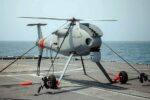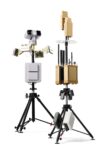Germany has formally approved the procurement of 20 new Eurofighter Typhoon Tranche 5 aircraft in a move that reinforces its commitment to European defense cooperation and airpower modernization. The deal—estimated at over €2 billion—will bring advanced capabilities to the Luftwaffe while serving as a technological bridge toward the Future Combat Air System (FCAS).
Tranche 5 Overview: What’s New in This Variant?
The Eurofighter Typhoon Tranche 5 represents a significant leap in avionics, sensor fusion, and survivability compared to earlier variants. While based on the Tranche 4 airframe introduced in recent years, Tranche 5 integrates several enhancements:
- Captor-E AESA radar (Mk1): Improved target tracking and electronic warfare resilience.
- Enhanced Defensive Aids Sub-System (DASS): Upgraded electronic countermeasures for modern threat environments.
- Future-proof avionics architecture: Modular hardware/software design enabling easier upgrades.
- Multirole capability: Full swing-role performance for air-to-air and precision strike missions.
The aircraft will also be equipped with upgraded mission computers and an open systems architecture to facilitate integration of future weapons such as the Joint New Air-to-Ground Missile (JAGM) or FC/ASW derivatives. According to Airbus Defence and Space, these jets will be “combat cloud ready,” supporting manned-unmanned teaming (MUM-T) concepts envisioned under FCAS.
Luftwaffe Modernization Trajectory
The German Air Force currently operates around 140 Eurofighters across various tranches. The older Tranche 1 aircraft are limited in multirole capabilities and are being phased out or converted for aggressor training roles. The new Tranche 5 fighters will supplement the more capable Tranche 4 fleet procured under Project Quadriga (38 units ordered in late 2020).
This latest tranche is part of Berlin’s broader effort to revitalize its tactical airpower following Russia’s full-scale invasion of Ukraine in February 2022. It aligns with Germany’s €100 billion special defense fund established shortly thereafter. In addition to Eurofighters, Berlin has committed to acquiring F-35A Lightning II fighters for nuclear sharing missions under NATO deterrence policy—demonstrating a dual-track approach balancing European industrial interests with transatlantic interoperability.
Tactical Implications and NATO Interoperability
The introduction of Tranche 5 aircraft will significantly enhance Germany’s ability to contribute to NATO operations across multiple domains:
- AIR POLICING: Improved sensor range and data fusion will bolster Baltic Air Policing missions.
- ELECTRONIC WARFARE RESILIENCE: DASS upgrades improve survivability against Russian integrated air defense systems (IADS).
- MULTINATIONAL OPERABILITY: Link-16 upgrades ensure seamless integration with allied C4ISR networks.
- AIR-LAND INTEGRATION: Enhanced targeting pods and precision munition compatibility support joint fires coordination with ground forces.
This capability uplift supports NATO’s Deterrence and Defence posture on its eastern flank while also preparing Germany for high-end peer conflict scenarios involving contested airspace operations.
A Bridge Toward FCAS
The Eurofighter consortium—comprising Airbus (Germany/Spain), BAE Systems (UK), and Leonardo (Italy)—has positioned Tranche 5 as a stepping stone toward the sixth-generation Future Combat Air System (FCAS). Slated for IOC around the mid-2040s, FCAS will feature a manned Next Generation Fighter (NGF), remote carriers (loyal wingmen), advanced sensors, AI-enabled battle management systems, and collaborative combat cloud infrastructure.
The modularity introduced in Tranche 4/5 ensures that lessons learned from early FCAS demonstrators can be back-integrated into operational fleets. Moreover, maintaining robust production lines at Airbus Manching secures critical aerospace know-how until FCAS enters service—a key concern amid shifting geopolitical landscapes and industrial competition from programs like GCAP or NGAD.
Industrial Impact and Strategic Signaling
The approval of this deal sends several strategic signals beyond pure capability enhancement:
- SUSTAINING THE SUPPLY CHAIN: The order helps preserve high-skill jobs across Europe’s aerospace sector—including over 100 subcontractors in Germany alone.
- POLITICAL COMMITMENT TO EUROPEAN DEFENSE COOPERATION: Amid debates over strategic autonomy versus NATO reliance, this move strengthens intra-European defense industrial collaboration via OCCAR oversight mechanisms.
- POTENTIAL EXPORT BOOST: A modernized German fleet may influence potential export clients evaluating late-block Typhoons against competitors like Rafale F4 or F-16V Block70/72.
Tentative Timeline & Funding Details
The Bundestag Budget Committee approved funding on October 4th, clearing the way for contract finalization by year-end. Deliveries are expected between late-2027 through early-2030s depending on production ramp-up rates at Airbus Defence facilities in Manching. The estimated value exceeds €2 billion ($2.1B), though exact figures remain classified due to sensitive subcomponent pricing tied to EW suites and mission systems integration.
Conclusion: Strategic Continuity Through Incremental Evolution
The approval of the Eurofighter Tranche 5 marks both continuity and evolution within German airpower doctrine—a deliberate investment into proven platforms while laying groundwork for next-gen capabilities via FCAS alignment. As geopolitical tensions persist across Europe’s periphery—from Kaliningrad to the Sahel—the Luftwaffe’s modernization trajectory underscores Berlin’s intent to remain a credible contributor within NATO’s high-intensity warfighting framework well into the next decade.









